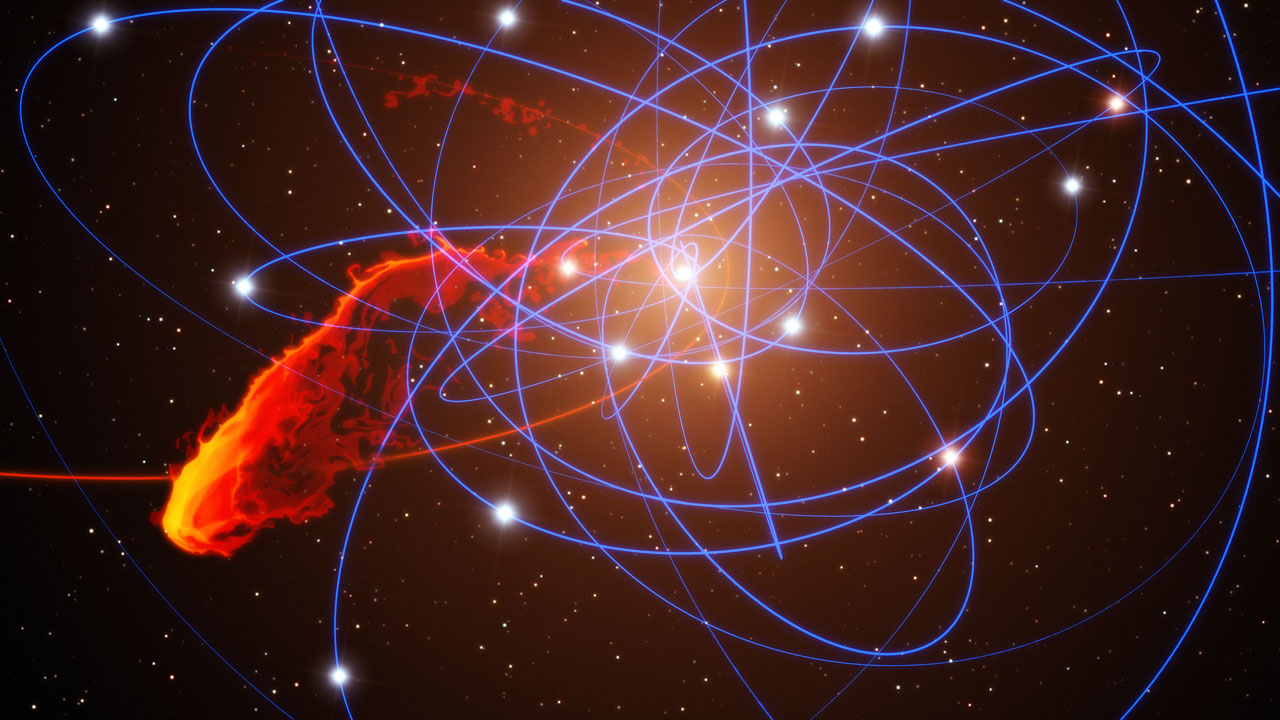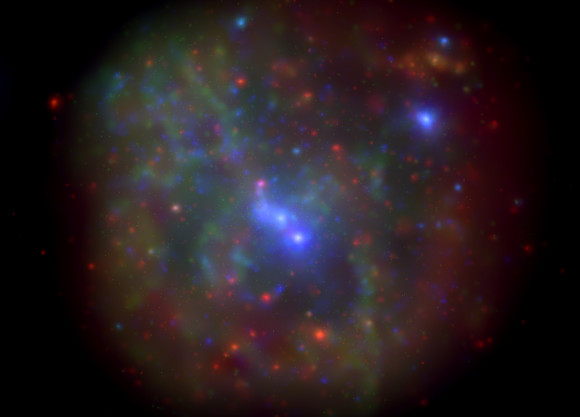
Here’s a story you’ll hear more about in the coming months. It’s the story of a mysterious gas cloud, known to astronomers as G2, discovered in 2011. The cloud is spiraling toward the supermassive black hole at the core of our home Milky Way galaxy. It was expected to encounter the black hole – which is called Sagittarius A* (pronounced Sagittarius A-star) – in late 2013. Now astronomers say to expect the encounter in the coming months, probably during Northern Hemisphere spring (Southern Hemisphere fall).
This cloud has about three times Earth’s mass. What will happen when it encounters the black hole? For us on Earth … nothing. Meanwhile, astronomers are even now anxiously watching for signs of the collision. Black holes, even supermassive black holes, are themselves invisible. No light can escape them. But as G2 spirals into Sagittarius A*, material falling into the hole will shine in X-rays.

Astronomers are excited about that. They’ll have a once-in-a-lifetime front row seat on the process by which a supermassive black hole feeds. University of Michigan astronomers, who are monitoring the Milky Way’s core with NASA’s Swift X-ray telescope, said in a press release on January 8, 2014 that while astronomers expect to see a change in brightness, they don’t know how dramatic it will be because they aren’t sure exactly what the gaseous G2 object is.
If G2 is all gas, it’ll glow in the X-ray band for years to come as the black hole slowly swallows the cloud.
But G2 might also be surrounding an old star. If that’s the case, the display would be less spectacular as Sagittarius A* slurped from the cloud while the star slipped by, dense enough to escape its grasp.
We’ll see what happens!
Bottom line: The gas cloud G2, which was expected to encounter the supermassive black hole at the core of our Milky Way galaxy last year, is still moving toward the hole. Now astronomers expect the encounter to occur in Northern Hemisphere spring (Southern Hemisphere autumn) of 2014.











